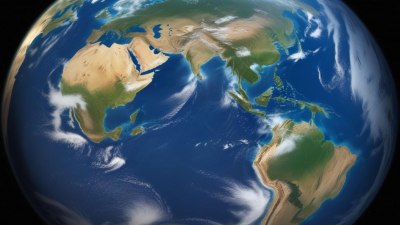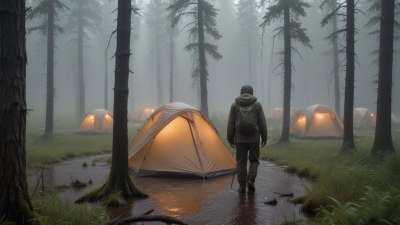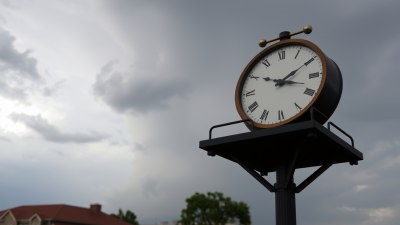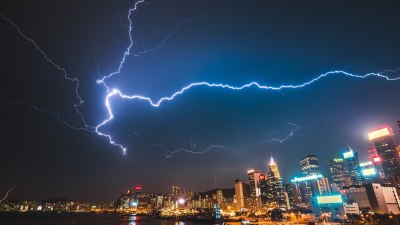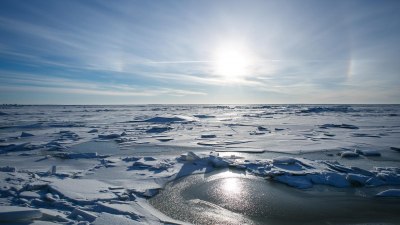Why Some Clouds Look Like UFOs
Explore the fascinating phenomenon of clouds resembling UFOs and their scientific explanations.
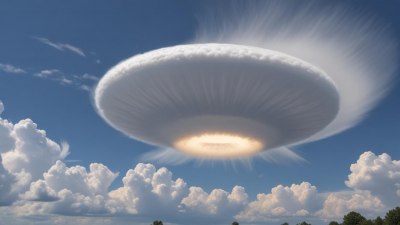
This image was created with the assistance of Freepik
Throughout history, people have gazed up at the sky and seen shapes in the clouds, sometimes perceiving them as fantastical or even otherworldly. In recent years, the phenomenon of clouds resembling unidentified flying objects (UFOs) has garnered attention from both enthusiasts and skeptics alike. But why do some clouds take on these unusual shapes, evoking thoughts of extraterrestrial spacecraft? Let us delve into the science behind this captivating meteorological occurrence.
The Science Behind Cloud Formation
To understand why some clouds appear to look like UFOs, it is essential to explore cloud formation's basic principles. Clouds are created when moist air rises, cools, and condenses into tiny water droplets or ice crystals. This transformation occurs when the air reaches its dew point, leading to the formation of clouds. Several factors influence cloud shape and development, including atmospheric pressure, temperature, humidity, and wind patterns.
Types of Clouds and Their Characteristics
Clouds come in various types, each defined by their shape, altitude, and the processes that form them. Key cloud types include:
- Cumulus: Fluffy, white clouds resembling cotton balls, typically indicating fair weather.
- Stratus: Smooth, gray layers that cover the sky, often bringing light rain or drizzle.
- Cirrus: Thin, wispy clouds high in the atmosphere, commonly signaling a change in weather.
- Altostratus: Mid-altitude clouds that often precede storms.
- Nimbostratus: Thick, dark clouds that produce continuous rain.
When it comes to cloud formations that might resemble UFOs, cumulus and lenticular clouds are the most notable contenders.
Cumulus Clouds: The UFO Lookalikes
Cumulus clouds are known for their puffy, white appearance, which can sometimes take on unusual shapes. When conditions allow for significant vertical development in cumulus clouds, they can swell and tower, causing them to resemble large, floating objects. This is especially true when sunlight casts shadows on the cloud, creating depth and dimension that might spark imagination.
Lenticular Clouds: The Helicopter of UFOs
One cloud type often associated with UFO sightings is the lenticular cloud. These lens-shaped clouds form when moist air flows over a mountain or hill, causing the air to rise and cool rapidly. The result is a smooth and stable cloud formation that can resemble a hovering disk or a flying saucer. Lenticular clouds appear particularly striking against a blue sky, and their unique shapes can easily lead observers to mistaken conclusions about their nature.
The Human Brain and Pattern Recognition
Humans are naturally inclined to recognize patterns, particularly faces or distinct shapes, due to a phenomenon known as pareidolia. This cognitive bias leads us to see familiar images in random stimuli, such as observing a face in the clouds or a UFO silhouette among cloud formations. Therefore, what might genuinely be a harmless cloud can trigger the imagination, leading to interpretations of something beyond our earthly realm.
Influence of Weather Conditions
Another factor that contributes to the UFO-like appearance of clouds is prevailing weather conditions. For instance, a humid atmosphere combined with significant temperature changes can create optimal conditions for unique cloud development. Thunderstorms often generate formidable cumulonimbus clouds, which can develop top-heavy structures that mimic UFOs. The combination of the cloud's silhouette, shadows, and surrounding weather phenomena can enhance this effect.
Cultural Expectations and Media Influence
The portrayal of UFOs in movies, television, and folklore also plays a role in shaping our interpretation of cloud shapes. Since many people have an established mental image of what a UFO looks like—typically a disc or saucer—cloud formations that share similar characteristics can quickly lead to misidentification. Consequently, when observers witness an unusual cloud, their preconceived notions may lead them to label it as a UFO rather than a weather phenomenon.
Photographic Evidence
In the age of smartphones and social media, photographic evidence of cloud formations resembling UFOs spreads rapidly. People often share their findings online, garnering attention and stirring curiosity. These media portrayals can amplify cloud-related myths, creating a cycle where unusual clouds are perpetually viewed through the lens of potential extraterrestrial phenomena. However, scientific explanations frequently accompany these images, emphasizing the need to differentiate between spectacle and reality.
Case Studies of Cloud-UFO Sightings
Several documented instances exist where witnesses claimed to see UFOs in the formation of clouds. These sightings often occur during unique weather conditions, such as storms or periods of atmospheric instability. In 2018, a viral video captured lenticular clouds hovering over a mountain range, with viewers quick to suggest the possibility of extraterrestrial involvement. However, meteorological experts later clarified that the cloud formation was entirely natural.
Psychological Perspectives
From a psychological standpoint, the phenomenon of clouds resembling UFOs taps into the human desire for wonder and the unknown. The concept of alien life intrigues many, and associating strange clouds with UFOs allows for imaginative narratives that captivate the mind. This inclination can lead to individuals sharing their experiences and contributing to the phenomenon's ongoing cultural narrative.
The Role of Education
Educational initiatives are vital for increasing public understanding of meteorology and atmospheric phenomena. By promoting greater scientific literacy, we can foster a more informed populace less prone to jumping to conclusions about misidentified objects in the skies. Schools, community programs, and social media campaigns can all play a crucial role in solidifying our understanding of cloud formations and meteorological science.
Embracing Natural Wonders
Ultimately, the spectacle of clouds that resemble UFOs invites us to marvel at nature's complexity and beauty. Whether we are gazing up at majestic lenticular formations or fluffy cumulus clouds, they remind us that the natural world possesses infinite wonders. Embracing our curiosity while seeking factual explanations nurtures a more profound appreciation for the phenomenon around us.
In conclusion, the phenomenon of clouds resembling UFOs stems from various scientific, psychological, and cultural factors. By understanding the basic principles of cloud formation and recognizing the power of our imagination, we can parse reality from fantasy and appreciate the artistry of clouds in our skies. As we continue exploring the relationship between natural phenomena and human perception, we recognize that the skies above have much to teach us about both the physical world and the depths of our imagination.
